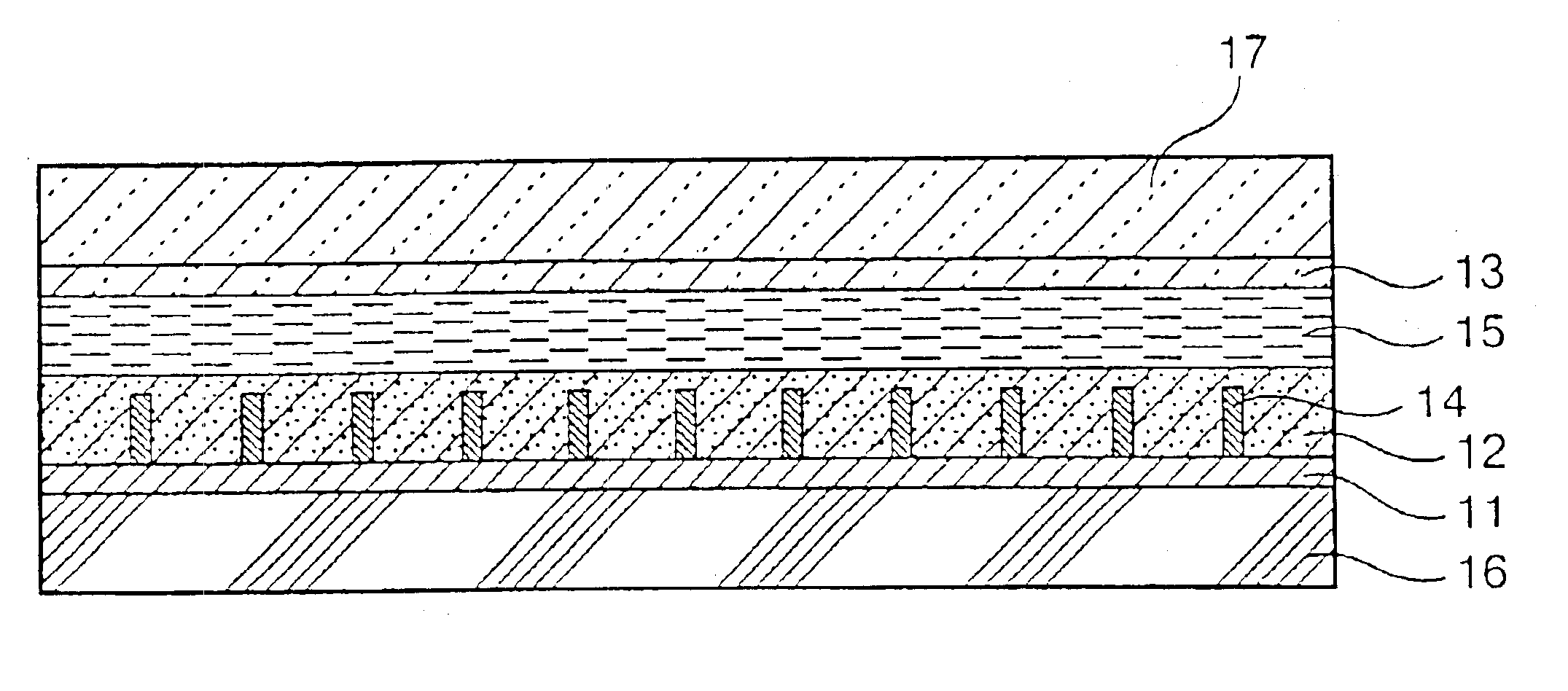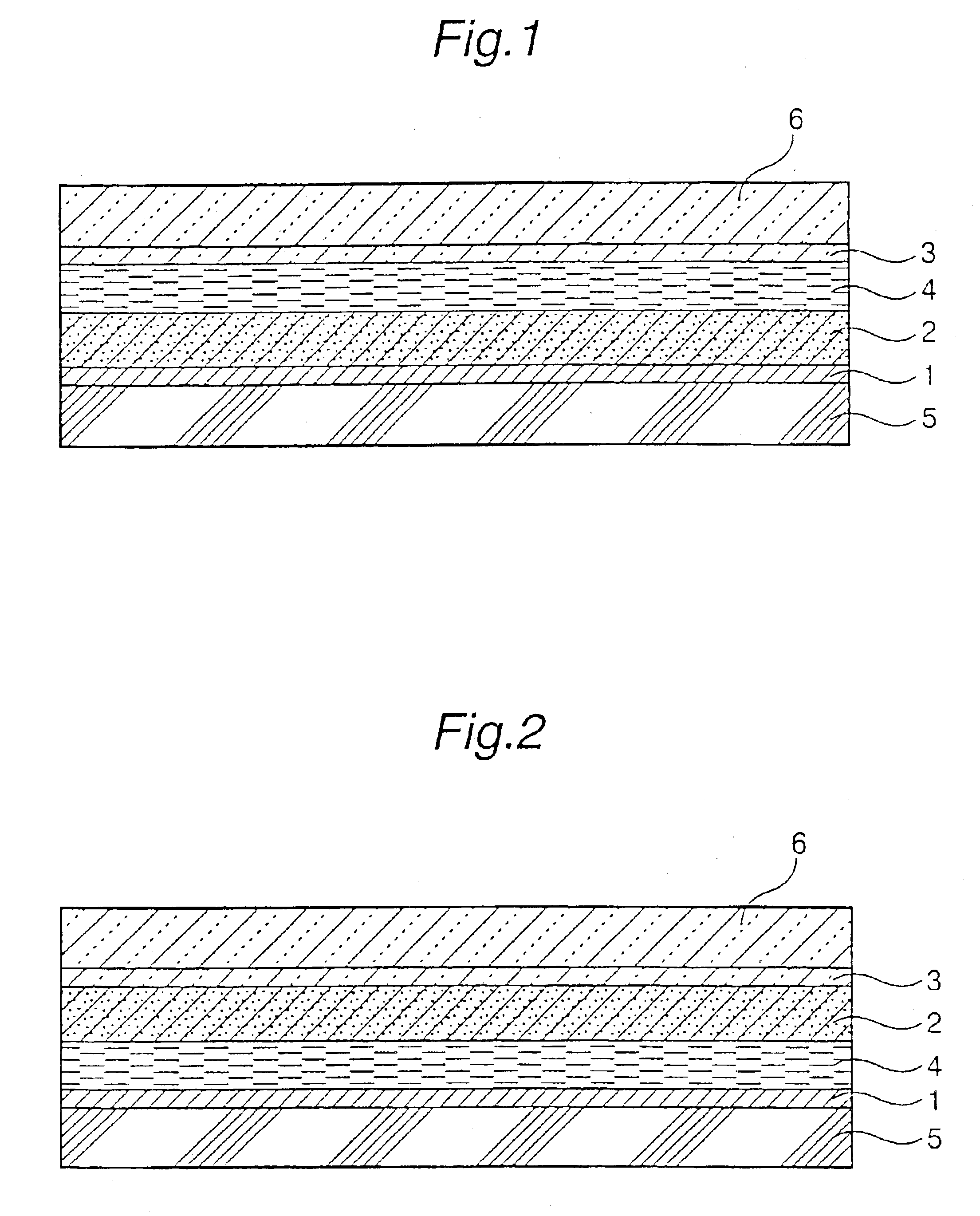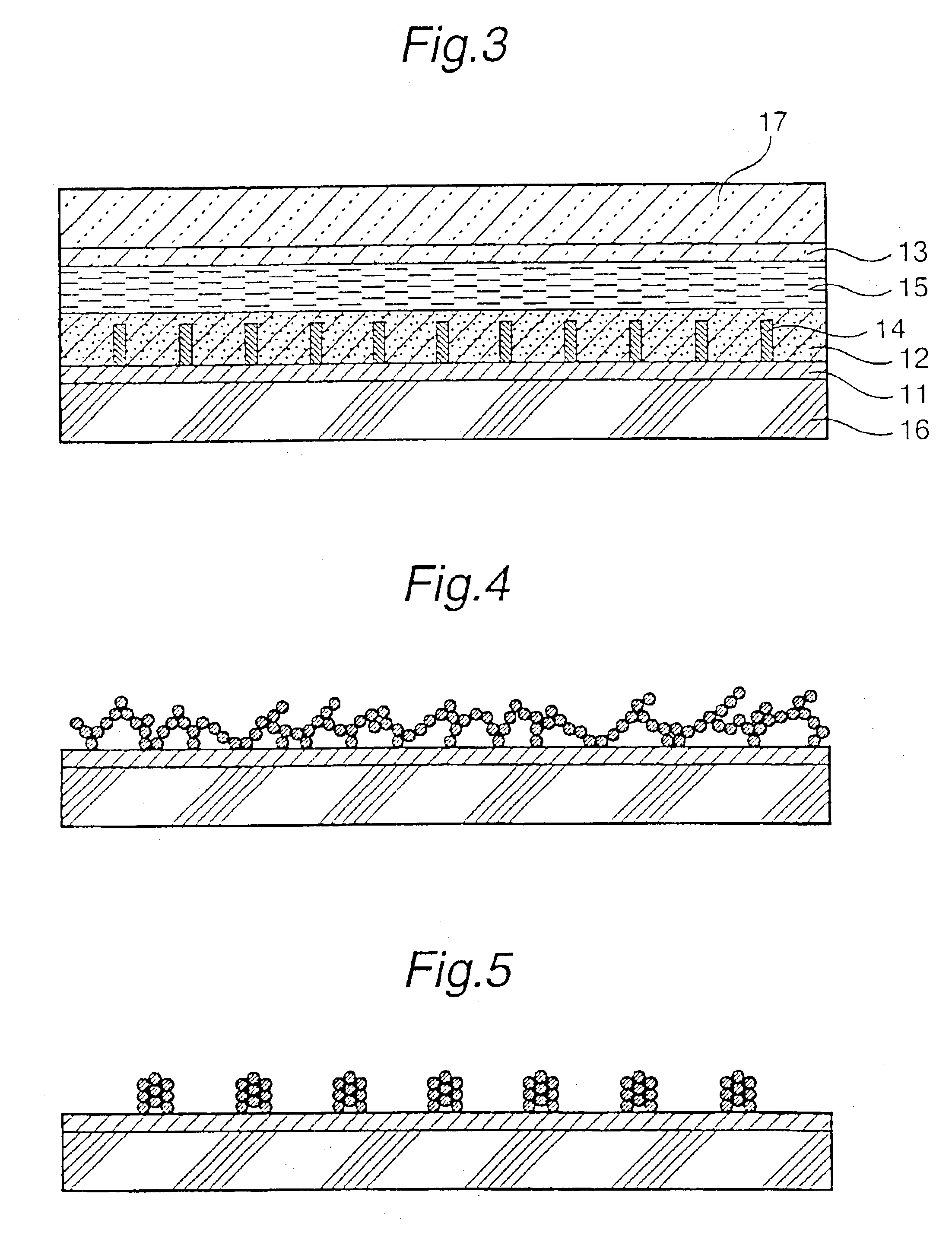Photoelectric cell and process for producing metal oxide semiconductor film for use in photoelectric cell
a photoelectric cell and metal oxide technology, applied in the field of photoelectric cells, can solve the problems of reducing the adsorption amount of photosensitizer, reducing the effective surface, and reducing the photoelectric transfer efficiency
- Summary
- Abstract
- Description
- Claims
- Application Information
AI Technical Summary
Benefits of technology
Problems solved by technology
Method used
Image
Examples
example 1
5 g of titanium hydride was suspended in 1 lit. of pure water, 400 g of a hydrogen peroxide solution of 5% by weight concentration was added to the suspension over a period of 30 min, and heated to 80% to effect dissolution. Thus, a solution of peroxotitanic acid was obtained. 90% by volume was divided from the whole amount of the solution, and its pH was adjusted to 9 by adding concentrated aqueous ammonia. The resultant mixture was placed in an autoclave and subjected to a hydrothermal treatment at 250° C. for 5 hr under saturated vapor pressure. Thus, titania colloid particles were obtained. The obtained titania colloid particles were analyzed by X-ray diffractometry. As a result, it was found that they consisted of highly crystalline anatase titanium oxide. The crystallite diameter and average particle diameter of the titania colloid particles are listed in Table 1.
Subsequently, the obtained titania colloid particles were concentrated to a concentration of 10% by weight and mixe...
example 2
A metal oxide semiconductor film was produced in the same manner as in Example 1, except that, after the peroxotitanic acid decomposition and film hardening by ultraviolet irradiation, Ar gas ion irradiation was carried out (irradiated at 200 eV for 10 hr with the use of ion implanter manufactured by Nissin Electric Co., Ltd.).
The pore volume and average pore diameter of the obtained metal oxide semiconductor film are listed in Table 1.
Adsorption of photosensitizer
An adsorption of photosensitizer on the obtainable titanium oxide film was performed in the same manner as in Example 1.
The adsorption amount of photosensitizer is listed in Table 1.
Preparation of photoelectric cell
A photoelectric cell was prepared in the same manner as in Example 1, and the Voc, Joc, FF and η thereof were measured.
The results are given in Table 1.
example 3
18.3 g of titanium tetrachloride was diluted with pure water, thereby obtaining an aqueous solution of 1.0% by weight concentration in terms of TiO2. Aqueous ammonia of 15% by weight concentration was added to the aqueous solution under agitation, thereby obtaining a white slurry of pH 9.5. This slurry was filtered and washed, thereby obtaining a cake of titanium oxide hydrate gel of 10.2% by weight in terms of TiO2. This cake was mixed with 400 g of a hydrogen peroxide solution of 5% concentration, and heated to 80° C. to thereby effect dissolution. Thus, a solution of peroxotitanic acid was obtained. 90% by volume was divided from the whole amount of the solution, and its pH was adjusted to 9 by adding concentrated aqueous ammonia. The resultant mixture was placed in an autoclave and subjected to a hydrothermal treatment at 250° C. for 5 hr under saturated vapor pressure. Thus, titania colloid particles were obtained. The obtained titania colloid particles were analyzed by X-ray d...
PUM
| Property | Measurement | Unit |
|---|---|---|
| crystalline diameter | aaaaa | aaaaa |
| particle diameter | aaaaa | aaaaa |
| pore diameter | aaaaa | aaaaa |
Abstract
Description
Claims
Application Information
 Login to View More
Login to View More - R&D
- Intellectual Property
- Life Sciences
- Materials
- Tech Scout
- Unparalleled Data Quality
- Higher Quality Content
- 60% Fewer Hallucinations
Browse by: Latest US Patents, China's latest patents, Technical Efficacy Thesaurus, Application Domain, Technology Topic, Popular Technical Reports.
© 2025 PatSnap. All rights reserved.Legal|Privacy policy|Modern Slavery Act Transparency Statement|Sitemap|About US| Contact US: help@patsnap.com



